Related Topics
Power Hungry Venti-Q
The Venti-Q gets nears completion, USB Type-C example circuit completed, and EE interview topics.
Void Copper Donuts
Parker wraps up his Wagon Chime Module and looks at USB Power Switches and Stephen covers his EQ build.
A Unique Perspective on Feature Creeping
Parker talks about his Embedded System Design process and Stephen explains his 20 band EQ design!
Other Resources
Circuit Break Podcast
Webinars
Videos
Tour MacroFab's ITAR-Compliant Facility
December 12, 2018, Episode #150
Congratulations to our Slack member Mobius Striptease! Mobius’ pulse generator won first place at their Senior Design Expo!
Article written about MacroFab: Houston electronics manufacturing company gears up for growth. Talks about the growth of MacroFab over the past 2 years.
- Parker
- RPI3 Compute Module
- PCM5122 Routed
- LAN9514 Routed
- single upstream USB port on BCM2835
- Pin 44 Ethernet 25MHz output
- Pin 31 LAN RESET
- Information found on the Raspberry pi forum
- Need to add USB current limiting
- CM3 HOME
- Guido Ottaviani made his own carrier board I have been looking at for inspiration to solve some of the final problems
- 1473149-4
- Connector being used to socket the RPI3 Compute Module
- Stephen
- Crazy EQ amplifier design continuation
- Opted to go with a card edge solution for each EQ band
- Each band connects via a 36 pin PCI-Express connector
- +12V
- -12V
- +5v Reference
- -5V reference
- Gnd
- 4 In Signals
- Cut
- Boost
- Potentiometer pin 2
- 21 modules in total. 1 module has all of the power and main signal in/out from the amp. This sends all of the other modules their power/ground and signals.
- Need to rethink things – Feedback loops are crappy.. Need to go with a 64 pin solution
- 20 ins and 20 outs
- Beveled edges and Hard Gold plating discussion in a future episode
- R.F.O.
- Debugging I²C with Hardware
- I²CDriver is a crowdfunded effort by James Bowman
- Open Source tool used to easily drive I2C devices
- Controls with a GUI, command-line, C and C++ using a single source file, or Python 2 and 3, using a module
- Low Cost Reverse Polarity and Over Current Protection
- Jeri Ellsworth’s new video on reverse bias protection
- Has a Robbie Robot on her desk!
- Methods
- “One of the options is to do nothing”
- Diode input
- Exploding Diode
- PMOS FET
- Low rds on – “almost not there”
- Body Diode – Watch out for this
Visit our Public Slack Channel and join the conversation in between episodes!
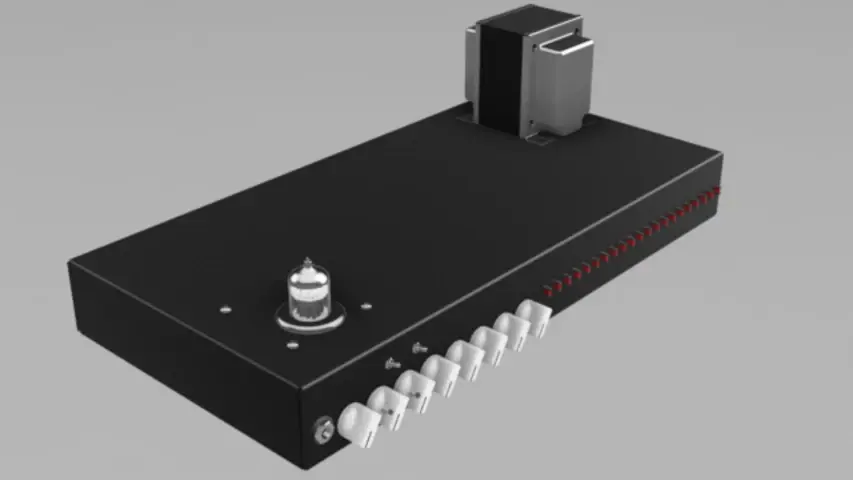
Stephen’s Amplifier rendered in Autodesk Fusion.
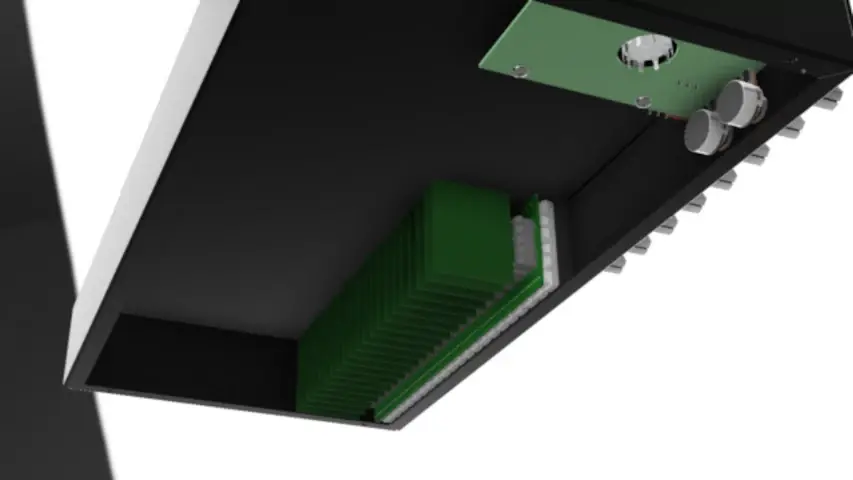
Underside of the amplifier. Not all the components are modeled yet.
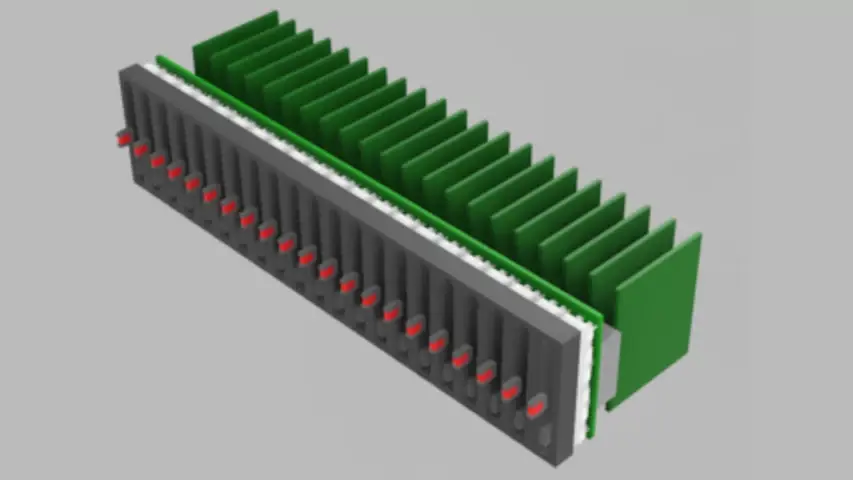
The current iteration of the 20 Band EQ module for the Amplifier.
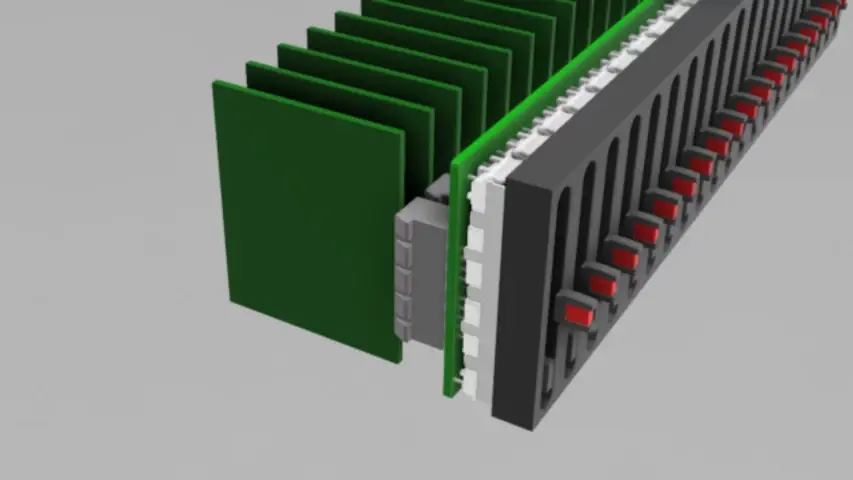
Close up of the PCI-Express connectors and slide pots.
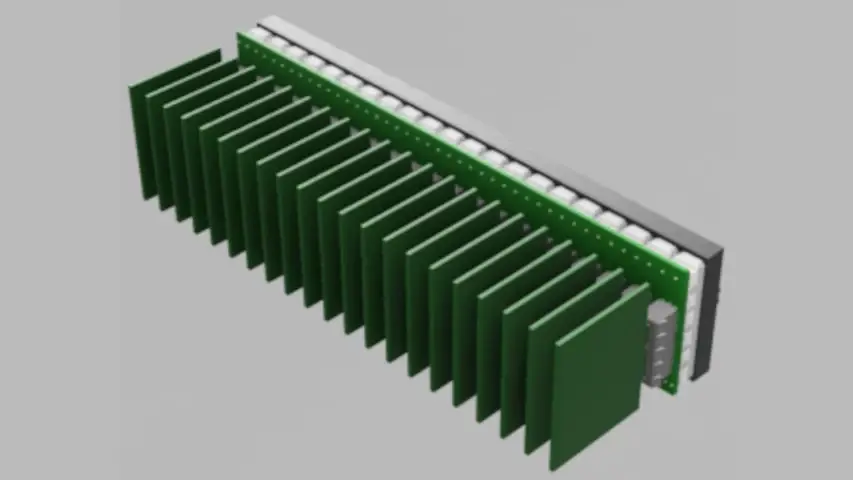
Almost looks like a heatsink!
About the Hosts

Parker Dillmann
Parker is an Electrical Engineer with backgrounds in Embedded System Design and Digital Signal Processing. He got his start in 2005 by hacking Nintendo consoles into portable gaming units. The following year he designed and produced an Atari 2600 video mod to allow the Atari to display a crisp, RF fuzz free picture on newer TVs. Over a thousand Atari video mods where produced by Parker from 2006 to 2011 and the mod is still made by other enthusiasts in the Atari community.
In 2006, Parker enrolled at The University of Texas at Austin as a Petroleum Engineer. After realizing electronics was his passion he switched majors in 2007 to Electrical and Computer Engineering. Following his previous background in making the Atari 2600 video mod, Parker decided to take more board layout classes and circuit design classes. Other areas of study include robotics, microcontroller theory and design, FPGA development with VHDL and Verilog, and image and signal processing with DSPs. In 2010, Parker won a Ti sponsored Launchpad programming and design contest that was held by the IEEE CS chapter at the University. Parker graduated with a BS in Electrical and Computer Engineering in the Spring of 2012.
In the Summer of 2012, Parker was hired on as an Electrical Engineer at Dynamic Perception to design and prototype new electronic products. Here, Parker learned about full product development cycles and honed his board layout skills. Seeing the difficulties in managing operations and FCC/CE compliance testing, Parker thought there had to be a better way for small electronic companies to get their product out in customer's hands.
Parker also runs the blog, longhornengineer.com, where he posts his personal projects, technical guides, and appnotes about board layout design and components.

Stephen Kraig
Stephen Kraig is a component engineer working in the aerospace industry. He has applied his electrical engineering knowledge in a variety of contexts previously, including oil and gas, contract manufacturing, audio electronic repair, and synthesizer design. A graduate of Texas A&M, Stephen has lived his adult life in the Houston, TX, and Denver, CO, areas.
Stephen has never said no to a project. From building guitar amps (starting when he was 17) to designing and building his own CNC table to fine-tuning the mineral composition of the water he uses to brew beer, he thrives on testing, experimentation, and problem-solving. Tune into the podcast to learn more about the wacky stuff Stephen gets up to.
Special thanks to whixr over at Tymkrs for the intro and outro!
Related Podcasts
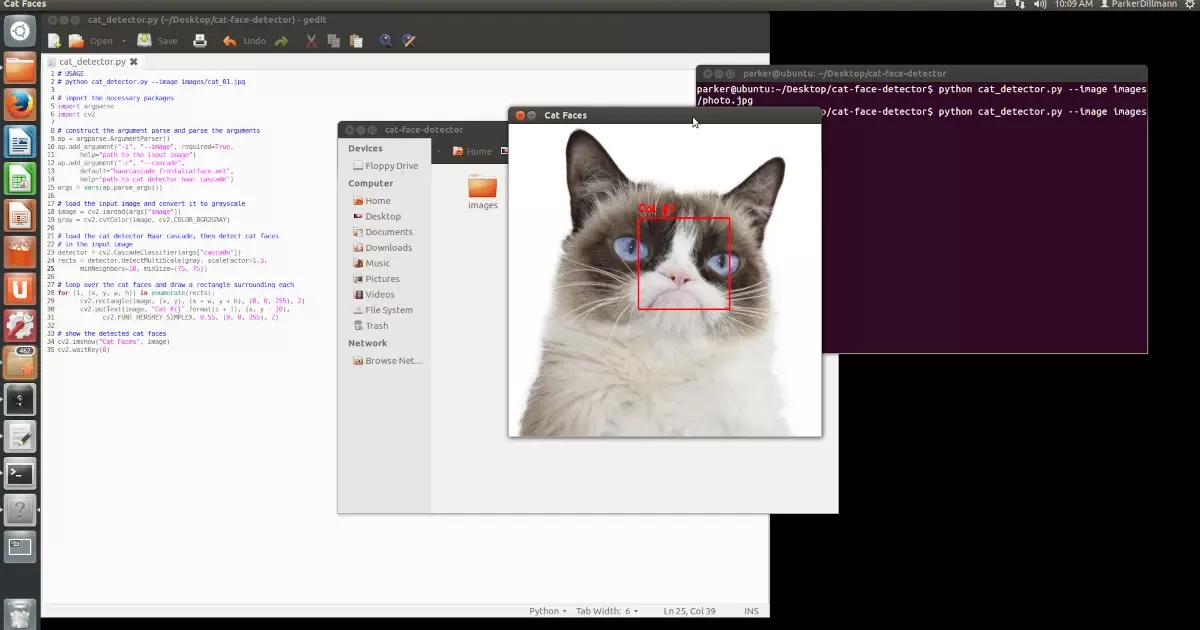
Reverse Biasing Opamps
Parker learns Python and OpenCV and Stephen gets silly with transformers.
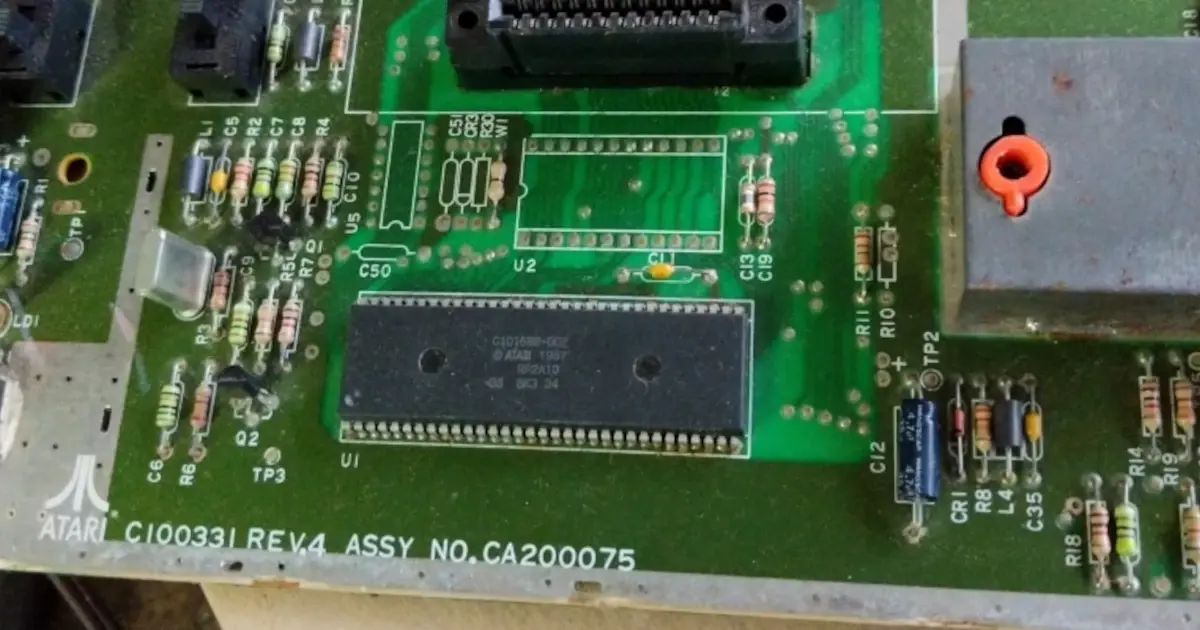
Void Copper Donuts
Parker wraps up his Wagon Chime Module and looks at USB Power Switches and Stephen covers his EQ build.
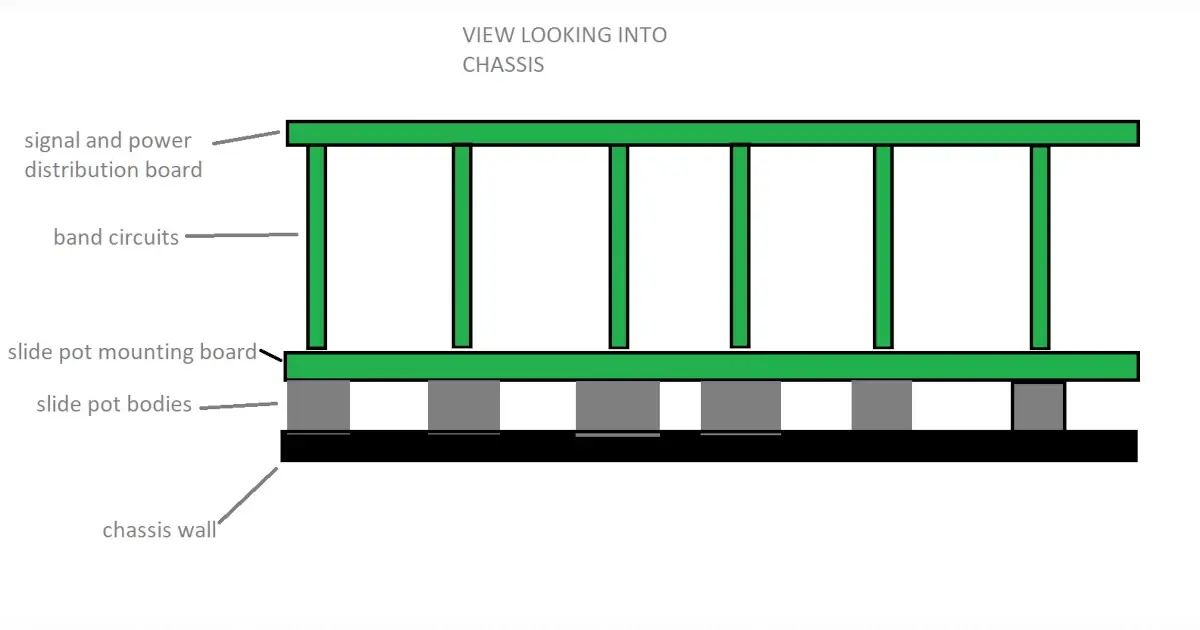
A Unique Perspective on Feature Creeping
Parker talks about his Embedded System Design process and Stephen explains his 20 band EQ design!
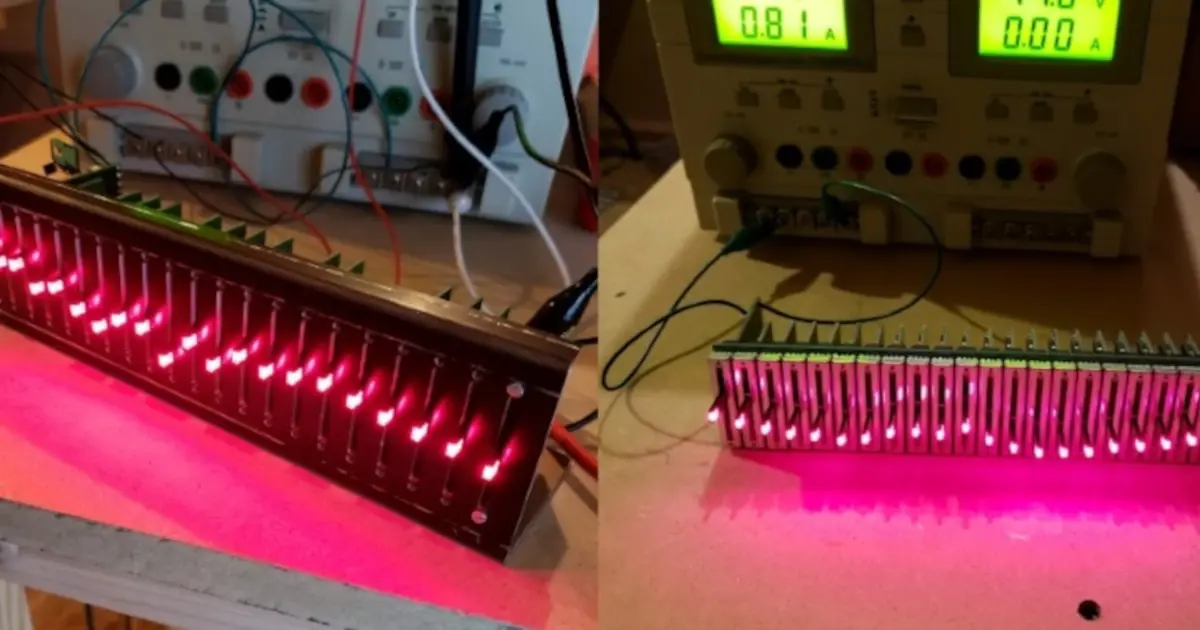
Power Hungry Venti-Q
The Venti-Q gets nears completion, USB Type-C example circuit completed, and EE interview topics.
About MacroFab
MacroFab offers comprehensive manufacturing solutions, from your smallest prototyping orders to your largest production needs. Our factory network locations are strategically located across North America, ensuring that we have the flexibility to provide capacity when and where you need it most.
Experience the future of EMS manufacturing with our state-of-the-art technology platform and cutting-edge digital supply chain solutions. At MacroFab, we ensure that your electronics are produced faster, more efficiently, and with fewer logistic problems than ever before.
Take advantage of AI-enabled sourcing opportunities and employ expert teams who are connected through a user-friendly technology platform. Discover how streamlined electronics manufacturing can benefit your business by contacting us today.